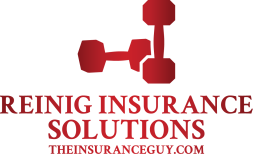The 24/7 type of health club is one of the fastest growing trends in the health club industry. Led by the efforts of organizations such as Anytime Fitness, the concept of a club with 24 hour access is appealing to many new club owners and causing many existing operators to re-think their business model. By reducing or eliminating staff during off-peak hours, a club owner can save a lot of money on payroll and taxes. The 24/7 club owner also doesn’t have to worry about whether or not their morning person will be there to open the doors at 5:30am. However, the operation of a key club poses a unique set of problems during those hours when there is no staff on duty. Insurance companies have struggled with the perceived increase in liability exposure and most insurance companies will not offer a quote to these types of clubs. Here are some of the reasons for concern.
- The lack of supervision presents the potential absence of emergency response if a member injures themselves or suffers a stroke or heart attack. Accidents do happen in health clubs and some injuries can be severe. The biggest concern is that there may be a situation when someone is need of immediate medical assistance and there is no one around to help.
- An unattended facility offers no supervision. If a member is doing something stupid on piece of exercise equipment, there is no employee present to correct the activity or to warn the member of potential dangers to themselves and others.
- What would happen if a female member is working out during non attended hours and another male member decides to follow her into the bathroom? Digital surveillance may record the pervert entering the women’s dressing room, but what happened behind closed doors? You can’t put a camera in a dressing room.
- Speaking of no surveillance in dressing rooms; if a member has a heart attack or stroke in the shower, they may lay there for a few hours until another member bumps into them.
- If someone is injured while no one else is around and the surveillance system records someone for several hours that obviously is in need medical assistance, it could be a little embarrassing for the club owner if they roll the tape in court.
As you can see, there are many reasons to be concerned about a club that chooses to have no staff during certain hours of operation. However, the good news is that with today’s technology, an owner can still maintain a safe workout environment and potentially reduce their overall risk exposure. By allowing members to access a facility during non-staffed hours, the member clearly understands that there will be no employee available if they need help. This is known as “Assumption of Risk”. An injured member’s attorney would have a difficult time using the “no-supervision” argument when every member knows the potential risk and has signed a waiver acknowledging this fact. A well written waiver is a must.
Digital surveillance systems are excellent tools to help control your club’s overall operation and safety issues. Having a surveillance system in place accomplishes a couple of things. One, the member realizes that doing stupid stuff will now be recorded. The member will also likely put things back where they belong and in general help keep the club more “clutter” free when they know someone is watching them. This alone, can improve the overall safety of the club. Secondly, when the member’s actions are recorded, there is no disputing inappropriate behavior or a violation of club policy. An argument can also be made that when a member injures themselves as a result of their own carelessness and they know the event has been recorded, that member is less likely to blame the club for their injury. Video doesn’t lie.
Medical alert necklaces and/or panic hardware are also a must in an unsupervised club. These medical alert devices should be made available to all members, and strongly encouraged to be used by those members that are “at risk” due to health related issues. If a member gets into trouble, they simply hit their panic button and the local EMT is alerted.
Having a 24/7 type of club requires the club owner to have clearly stated rules, policies and guidelines and the waiver must support the key club concept. It is best if the waiver is a stand alone document requiring a member’s signature. However, if the waiver is included in the wording of the membership agreement, there should be a separate signature line below the waiver.
Finding an agent who will help provide you with insurance coverage for this type of club will not be easy. You want to be sure to work with a broker who will not only provide you with the proper insurance coverage, but can also help you design the risk management protocols for reducing potential litigation. For further information about the risks associated with a 24/7 club concept, you can email me at ken@clubinsurance.com.

